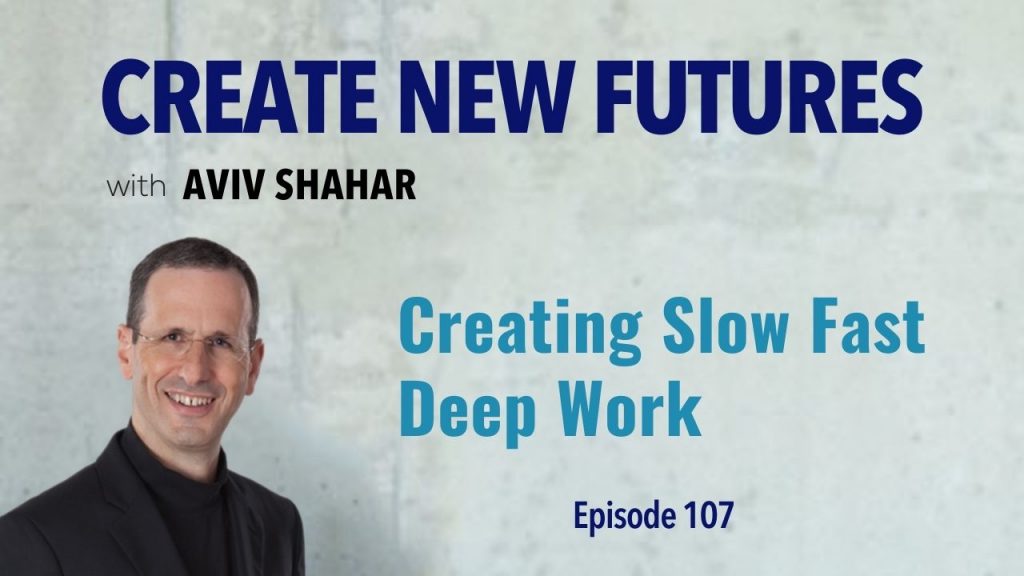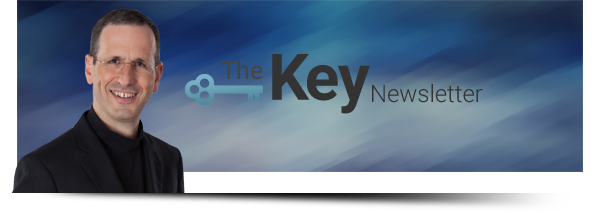Hello Leader,
We were at the end of the first day of a three-day virtual workshop when I asked a question that changed the course of the event: “Have you been as provocative in your future exploration as you can?”
A little context before I recount what happened. Over the last year our clients have been surprised time and again at the transformative, energizing and results-producing virtual events we have conducted with senior leadership teams. In My 2020 Epiphany, I described the game-changing discovery the COVID19 pandemic brought to my consulting work.
Clients have been delighted and amazed by what they were able to accomplish during these events. However, I was more astonished to discover the effectiveness and the dramatic results achieved by applying the nine design principles we focused on in that article.
Although some people may be eager to get back to the office, numerous executives have told me that the dynamic environment we generate in the virtual space creates a differentiated experience and produces outcomes that exceed what we do in person. Specifically, the creative usage of rooms, the application of a digital board, the evolving choreography of the conversations, and our facilitation techniques unlock tremendous energy and novelty.
At first these outcomes boggled my mind. Now, however, we have seen transformational results with many teams in different companies. This approach simply works.
One key element is that we feel free to “play jazz” with the workshop agenda. This is easier said than done. Playing jazz with the workshop flow in the virtual space requires mastery and confidence.
Back to the story. Here is what happened that led me to ask the game-changing question above. Three teams just had completed the readout of their respective Horizon Three (H3) stories.
The Five Meditations - Part 3

Listen here: Episode 107 – Creating Slow Fast Deep Work
Developing a series of divergent H3 stories of the future is a core element of our strategy work. Effective H3 stories are explorative, transformative, disruptive, and visionary. We are seeking to imagine and explore the art of the possible and redefine the future of the business and the organization.
When teams do this work well, they inquire deeply and push themselves out of their individual and collective comfort zones. They are able to connect new dots, see possibilities previously invisible, create new alternative outcomes, and unleash a vibrant can-do energy.
On this occasion, as the three teams read through their stories, they did not come across as highly energized and/or inspired.
I felt uneasy. This was a pivotal moment.
Fortunately, having done this work for more than two decades, I am relaxed enough to be present in the moment, to pivot as needed. I am prepared to go off script and abort the agenda, to become a live player and activate the team to its greatest potential.
So I asked. “Do you feel that you truly have challenged yourselves to imagine daring future possibilities? Have you been as provocative in your exploration as you can?”
By asking this question, I effectively aborted the workshop agenda, thus dramatically increasing the complexity of leading the process.
A workshop process is like a flight. There is a takeoff, followed by an ascent, navigation to the destination, arrival, and then a safe landing. Aborting the agenda meant adding several unique maneuvers during the flight to find a new route to the destination while still hitting a few critical points along the journey. Throwing the original plan out the virtual window meant re-charting our path as we went. This is a complex challenge that requires me to be at the top of my game and operate at a high level of mastery.
When you go off the scripted musical score, you become a live jazz player. You operate outside the structure, all while maintaining an inner logic inside a bigger meta-structure. Embracing this level of ambiguity and complexity in flow can be a little scary at first. All these elements were present when I asked that question.
One leader spoke first, painting several new disruptive elements we had not considered. Other leaders followed him, highlighting additional plotlines. Instead of transitioning toward the anticipated convergence, we embarked on a new divergent cycle. After re-forming the original three groups, I challenged them to develop a new cycle of deep work and to produce prototypes of these futures for the following morning.
The workshop game-changer
Challenging the teams to produce three new compelling prototypes of the future in the evening and the early morning before we resumed the session was the workshop game-changer.
To produce this result, team members must enter the deep work zone. What is the deep work zone?
It is an intentional, open, focused, exploratory, collaborative space where people imagine and create new connections and possibilities. In this zone, people step outside of the run-the-business pressure and reactivity to discover transform-the-business scenarios not considered before. It is a slow-fast space. Although this process initially appears to move slowly, once people begin making nonlinear connections from which new insights emerge, the team unlocks rapid breakthroughs.
Breakthroughs emerge because of the unique combination of three elements:
-
A safe space for deep work that enables people to relax and engage creatively.
-
Unconstrained zero-gravity thinking that unlocks novel “what if” combinations.
-
A commitment to produce a prototype rapidly inside a narrow time frame, such as overnight.
The combination of these three elements produces an elevated level of creativity. Novelty emerges as people download information and insights from the unconscious and co-create in a focused manner.
As you know, when you get on a bike, you must start riding to stay balanced. When you jump in the deep end of the pool, you must swim so you don’t sink. Similarly, when you take on an unconstrained rapid prototyping assignment inside a very narrow timeframe, you produce the goods.
The following morning the three teams returned, energized and focused. Some met late into the evening, while people in Europe worked during their morning. As the larger group re-convened to continue the workshop, we were a quantum leap ahead of where we had ended the previous day. The novel prototypes generated overnight gave us a whole new fresh start.
Rerouting the workshop navigation, to sherpa us safely to the desired destination was still complex and demanding. We were half a day behind the original schedule, although now we were wiser and operating at a much higher altitude.
Enabling the team to internalize the new Horizon Three scenarios, converge on its Horizon Two priorities, and seed the capabilities and the culture that will bring this future to life required me to improvise. I needed to facilitate a free-ranging discovery, stay attuned to the group’s pace and energy, continually shape-shift the format, and enable the emergent wisdom and intelligence of the team to guide the evolving exploration.
This kind of experience qualifies as a create-the-future Disneyworld strategy ride that surprises and exhilarates everyone involved.
Okay, so how about your new future? Have you been as provocative in your future exploration as you can?
Discover how to apply the practices in this Key. Invite the collective creativity and genius of your team. Create a safe space for deep work. Apply zero-gravity thinking and rapid prototyping. Ask your team to imagine a daringly novel future, and then describe how they will bring it to life.
© Aviv Shahar

